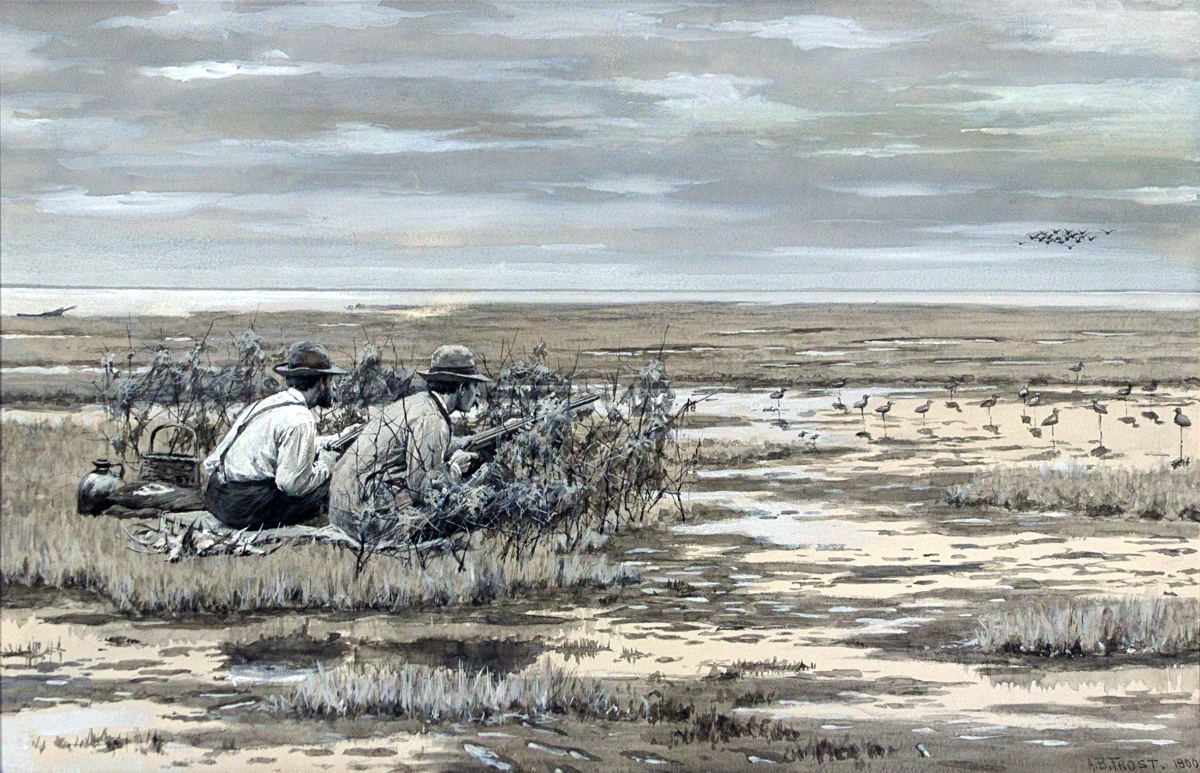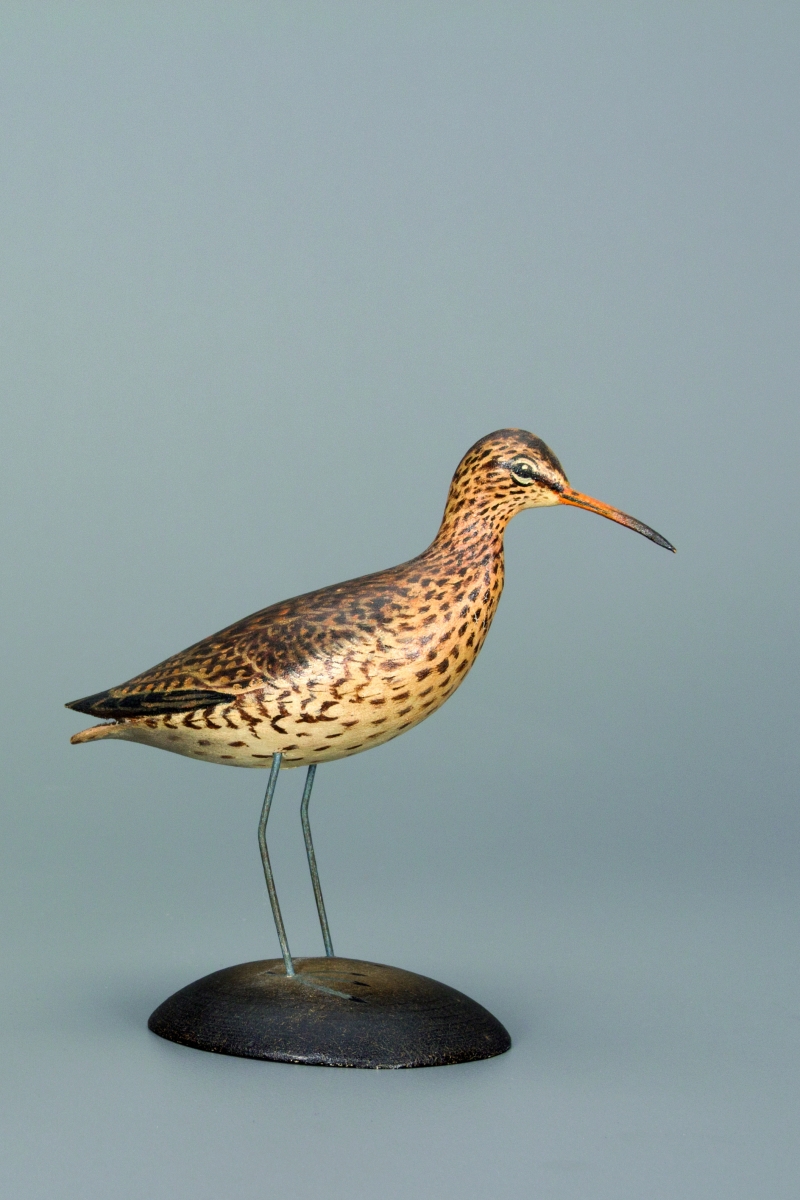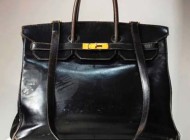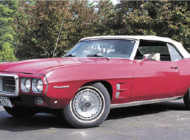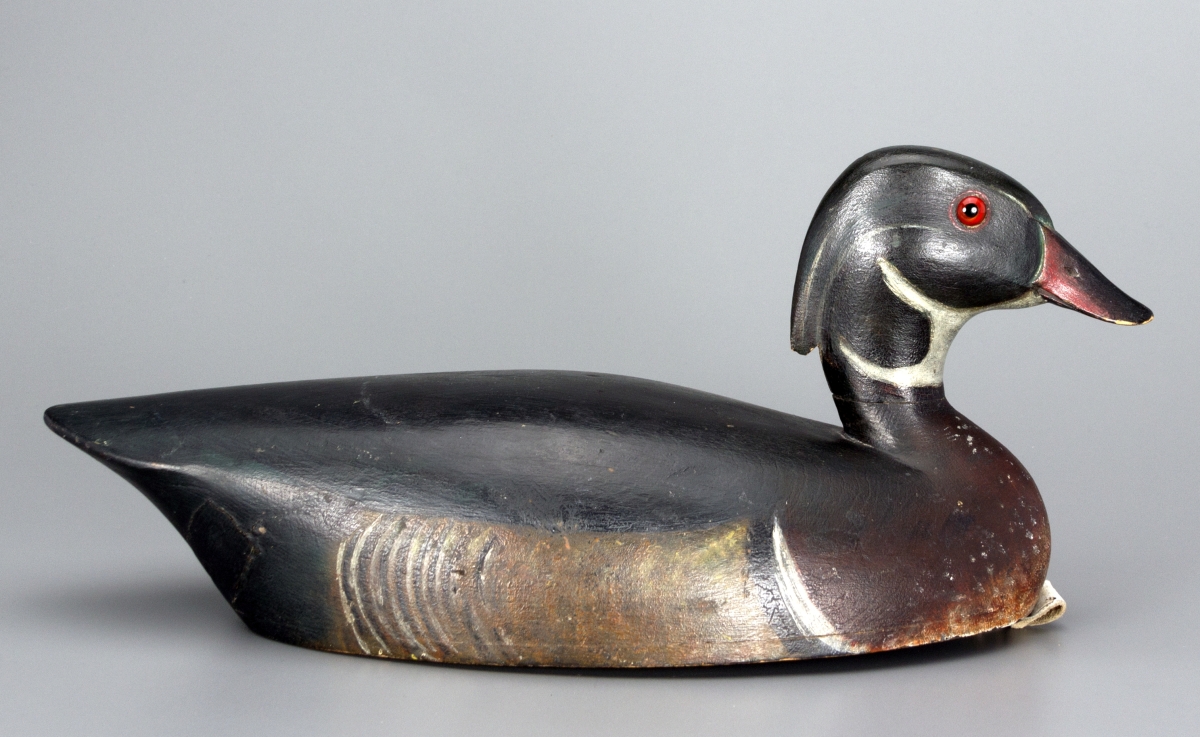
Wood duck drake by Thomas Chambers (1860–1948), Wallaceburg, Ontario, circa 1900, $270,000 ($80/$120,000), a record for the artist and for a Canadian decoy. Chambers, who was born in Toronto, became keeper of the St Clair Flats Shooting Company, also known as the Canada Club, and was much admired as a carver. This duck is among the most coveted of all decoys and, according to the auctioneer, had never been for sale.
Review and Onsite Photos by Laura Beach, Catalog Photos Courtesy Copley Fine Art Auctions
PLYMOUTH, MASS. – Every collecting niche values provenance. Perhaps none venerates it more than the field of North American wildfowl decoys. Sportsmen are often carvers, and carvers are collectors, resulting in a close-knit field in which most of the players seem to know each other. In the early days, when Donal C. O’Brien Jr (1934-2013) first took interest in decoys, sportsmen traded carvings from their rigs. The monetized market collectors know today began taking shape in the 1960s and 1970s.

The late Donal C. O’Brien Jr championed many environmental causes. One was the Quebec-Labrador Foundation, which he chaired. Attending the sale, from left, were QLF biodiversity conservation consultant Dr Kathleen Blanchard and QLF president emeritus Lawrence B. Morris. From center, O’Brien’s wife Katie, daughter Kit O’Brien Rohn and nephew Stephen B. O’Brien Jr, president of Copley Fine Art Auctions.
“The nice thing about Don as a collector is that he had such longevity in the field. He knew every collection, the quality and rarity of the birds in it, what was available. He made very informed decisions and continued trading up,” said Copley Fine Art Auctions president Stephen B. O’Brien Jr, who auctioned the first installment of his uncle’s collection in Plymouth July 27.
“It looks like we set 13 world records for decoys and another six for fine art,” O’Brien said as the dust was still settling. In combination with the firm’s various owners sale on July 28, Copley Fine Art realized $4.8 million on more than 500 lots. The single-owner O’Brien sale saw $3.48 million on 156 lots and was 100 percent sold by lot.
This was the most notable single-owner sale of decoys since the Dr James M. McCleery trove crossed the block in 2000, with the average price per lot climbing to more than $27,000, exceeding the roughly $18,000 lot average set by McCleery. Estimates were left behind as records tumbled.
O’Brien sales highlights included a Canada goose by Charles E. “Shang” Wheeler, auctioned for $198,000, including premium, a record for the maker and for the Connecticut region; a wood duck by Thomas Chambers, $270,000, a record for the carver and for a Canadian decoy; and a pintail drake by John English, $246,000, a record for the maker and for the Delaware River region. An exceptional North Carolina bird, the Barber-O’Brien ruddy duck by Lee Dudley, fetched $234,000.
“Don was among the first to recognize decoys as a true American art form, rather than simply utility objects. He followed in the footsteps of Joel Barber, whose book Wild Fowl Decoys came out in 1934. He was one of the most important early source collectors,” said Stephen O’Brien. Selections from the 500-object O’Brien collection were shown at the Museum of American Folk Art in 1981, a decade after the collector was profiled in Sports Illustrated.
Reared in Manhattan with summers spent in the coves and marshes of West Hampton on Long Island, N.Y., Donal C. O’Brien Jr grew up in a family of sportsmen and naturalists. He received his first bird carving, a Wendell Gilley miniature duck retailed by Abercrombie & Fitch, as a gift from his parents when he was 5.

“It’s by an A-list maker and is an absolutely singular example. It managed to survive for well over a hundred years,” Copley Fine Art decoy specialist Colin McNair said of the John English pintail drake, auctioned for a record $246,000 ($80/$120,000). Above left, “Break of Day — Pintails” by Roland H. Clark (1874–1957), 1935, oil on canvas, $33,000 ($20/30,000). Above right, “Virginian Partridge (No. 16, Plate LXXVI)” after John James Audubon (1785–1851), 1830, hand colored engraving, $63,000 ($10/$20,000).
“By 1944, before the age of 10, he felt compelled to cut a decoy out of his grandfather’s rig and display it on the shelf. Throughout the 1960s, O’Brien was at the epicenter of the field’s formation, along with his friends William J. Mackey, Jr (1915-1972) and Adele Earnest (1901-1993),” Stephen O’Brien writes in Copley’s sales catalog. The volume is an affectionate, deeply informed tribute to the sportsman, carver, collector and conservationist, as well as an essential history of the decoy trade.
Donal studied at the Hotchkiss School and Williams College before earning a law degree at the University of Virginia. He joined the white-shoe law firm Milbank, Tweed, Hadley & McCloy in 1959, rising to the level of senior partner in his 52-year career there. Chief counsel to the Rockefeller family, he set up the Rockefeller Trust Company. His widow, Katie, whom he married in 1956, attended the sale with the couple’s children.
“I happen to come at decoys from all sides – a love of waterfowl, an ardent interest in gunning and decoy making, and an admiration for the decoy as an art form. The result is an irrevocable intertwining that makes it impossible for me to separate or quantify what pleases me in decoys,” O’Brien wrote.
“He was passionate to the bone about birds,” David Yarnold, president and chief executive officer of the Audubon Society, told the New York Times of O’Brien, who was awarded the organization’s highest honor, the Audubon Medal, in 2010. O’Brien served as chairman of the National Audubon Society for 15 years.
Also present at Copley’s sale were representatives of the Quebec-Labrador Foundation, another preservation organization in which O’Brien, close friends with founder Robert A. Bryan, was thoroughly involved.
“If I were to pick a pair of decoys to illustrate the art of decoy making, I would pick the Ward brothers 1936 canvasbacks,” Donal O’Brien wrote of a hen and drake formerly in the McCleery collection that together brought $156,000 at Copley.
Donal O’Brien Jr long since joined the pantheon of great collectors of sporting art. Now his decoys, bearing an ink stamp modeled after one of the Ward brothers canvasbacks, have flown the coop.
The collector confessed, “I like the whole thing, feeling the cold, pickup up the decoys, and when I come home on Sunday and think about what I did on Saturday, I’m revitalized and prepared to go back to the office to be civilized for a few days.” No wiser words have been said about collecting.
Prices reported include the buyer’s premium.
Copley Fine Art Auctions, which promises more from the Donal C. O’Brien collection, is now accepting consignments for its Winter Sale 2018. For more information, email info@copleyart.com, call 617-536-0030 or visit www.copleyart.com.





